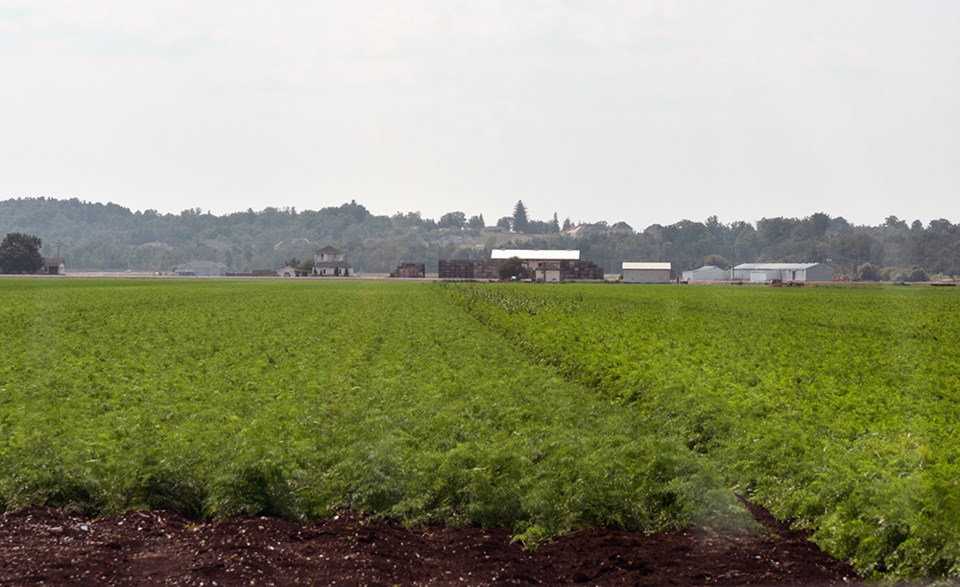Biographer Steven Holmes called John Muir “the patron saint of 20th century American environmental activity.”
An ardent advocate for wilderness, Muir helped launch America’s National Parks system to protect locations like Yosemite and Sequoia, and in 1892 founded the Sierra Club.
But in 1864, he was just a young botanist who left his studies in Wisconsin to travel to Canada and explore the wilderness.
Some 45 years later, Muir wrote about those travels in an autobiography, when he was “botanising in glorious freedom around the Great Lakes and wandering through innumerable tamarac and arbor-vitae (cedar) swamps, and forests of maple, basswood, ash, elm, balsam, fir, pine, spruce, hemlock, rejoicing in their bound wealth and strength and beauty… glorying in the fresh cool beauty and charm of the bog and meadow heathworts, grasses, carices, ferns, mosses, liverworts displayed in boundless profusion.”
That summer, he reached the Holland River and the expanse of the Holland Marsh. It was there he discovered the rare native orchid Calypso borealis, which he described as a nearly religious experience.
Muir had become lost in the tangle of fallen trees and endless boggy streams in the great marsh, and began to fear he’d have to spend the night.
It was late in the afternoon that he made his discovery: “I found beautiful Calypso on the mossy bank of a stream, growing not in the ground but on a bed of yellow mosses in which its small white bulb had found a soft nest and from which its one leaf and one flower had sprung. The flower was white and made the impression of the utmost simple purity like a snowflower. No other bloom was near it... It seemed the most spiritual of all the flower people I had ever met. I sat down beside it and fairly cried for joy.”
He made his way out of the swamp, and found shelter in a log house — where he was told, in a broad Scots dialect, “Mony a puir body has been lost in that muckle, cauld, dreary bog and never been found.”
For a month, he boarded at the home of Catherine (Sutherland) Campbell, widow of Arthur Campbell, in the Scotch Settlement of West Gwillimbury. Mrs. Campbell, who lived with her daughter and grown sons, Daniel and Alexander, was mentioned in Muir’s notes.
“Mrs. Campbell could hardly have been kinder had I been her own son,” he wrote. But the “boys” were fond of practical jokes, and Muir did not escape, although he seems to have shared their sense of humour.
The Campbell boys once told authorities, hunting for a deserter from the British army, that they had seen a “suspicious character creeping out of the woods and swamps of the Holland River.” A watch was set in the area indicated, and, wrote Muir, “when they captured me I had some difficulty in explaining that I was only a botanist.”
Muir would later head westward through Ontario, ending up in the Meaford area, where he met up with his brother, Daniel, who had entered Canada in 1863 —reportedly evading the draft for the Civil War. The brothers got work at a sawmill owned by William Trout and Charles Jay, where they spent the winter.
Daniel returned to Wisconsin in 1865, but John stayed on, inventing a new type of lathe that allowed the mill to mass produce broom handles. When a devastating fire destroyed the mill and the products of his efforts, in 1866, he returned to the U.S.
His writings speak of the Scots, English and Irish settlers of Ontario with sympathy and understanding. Muir himself had been born in Scotland, in East Lothian, his family coming to the U.S. in 1849, when he was 11.
All the same, he wrote in a letter to a friend that “the hard-working, hard-drinking, stolid Canadians” were blind to the beauty around them.
“In vain is the glorious chart of God in Nature spread out for them. So many acres chopped is their motto, so they grub away amid the smoke of magnificent forest trees… Canada, although abounding in the elements of wealth, is too difficult to subdue to permit the first few generations to arrive at any great intellectual development.”
In his first summer, Muir complained, “I did not find a single person who knew anything of botany.”
The late George Jackson, historian and member of the BWG Local History Association, once recommended the Town of Bradford West Gwillimbury and the County of Simcoe place a historic plaque, commemorating John Muir’s explorations in the Holland Marsh, and the discovery of the Calypso borealis orchid.



